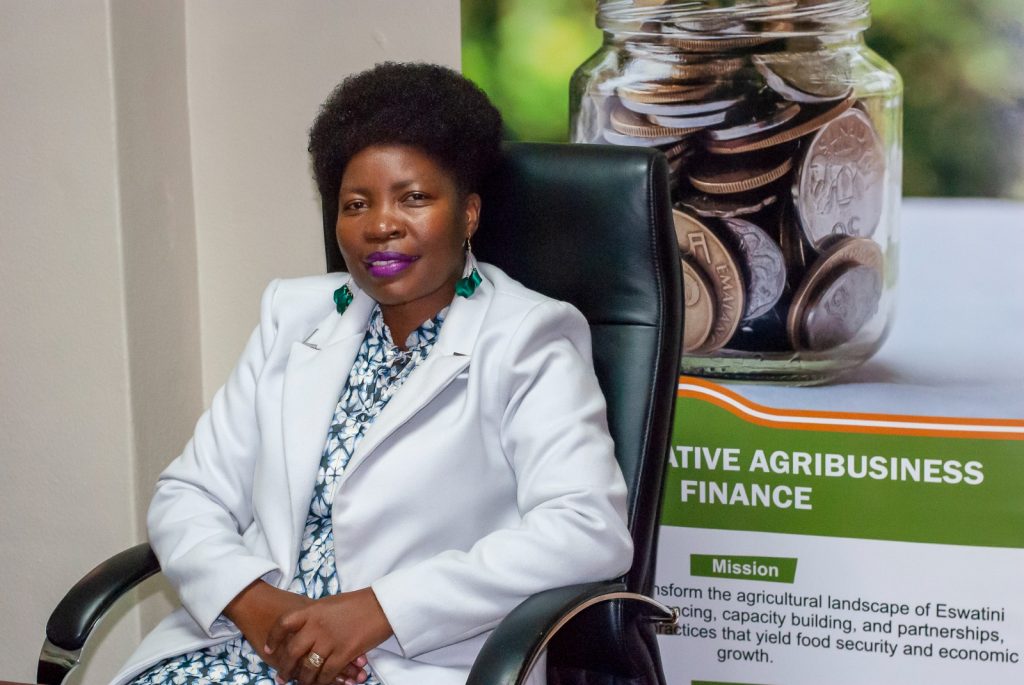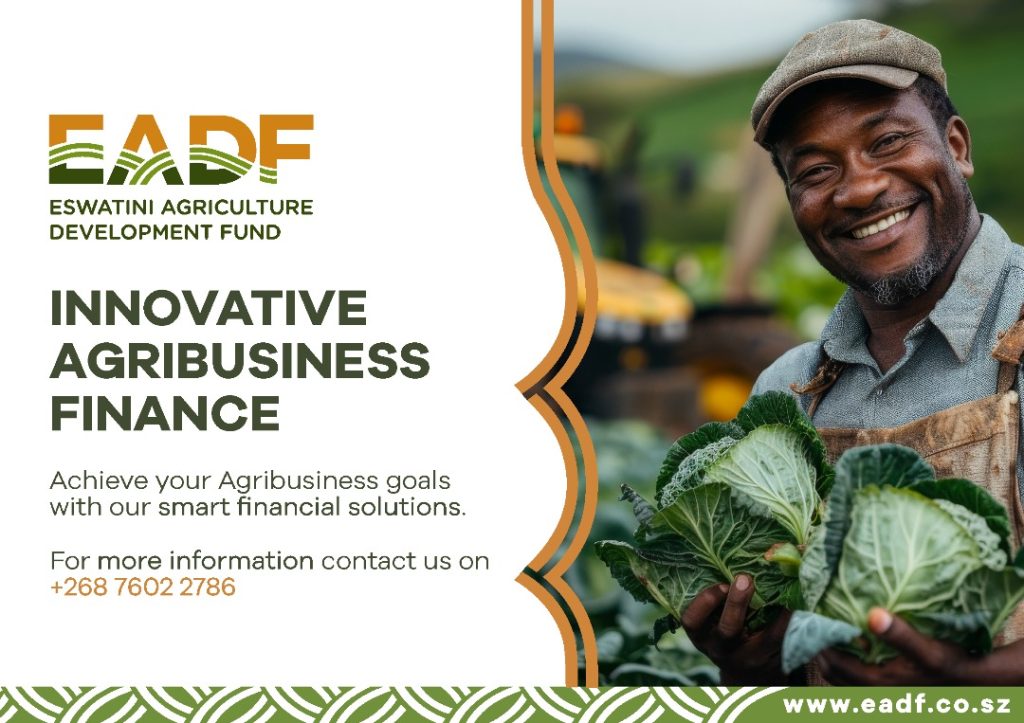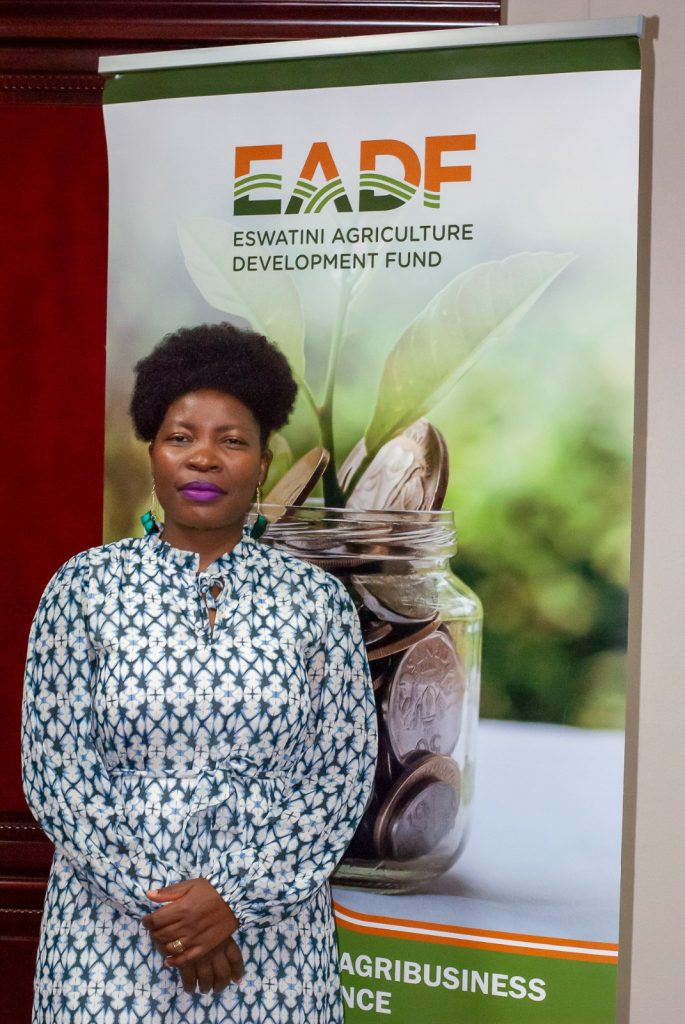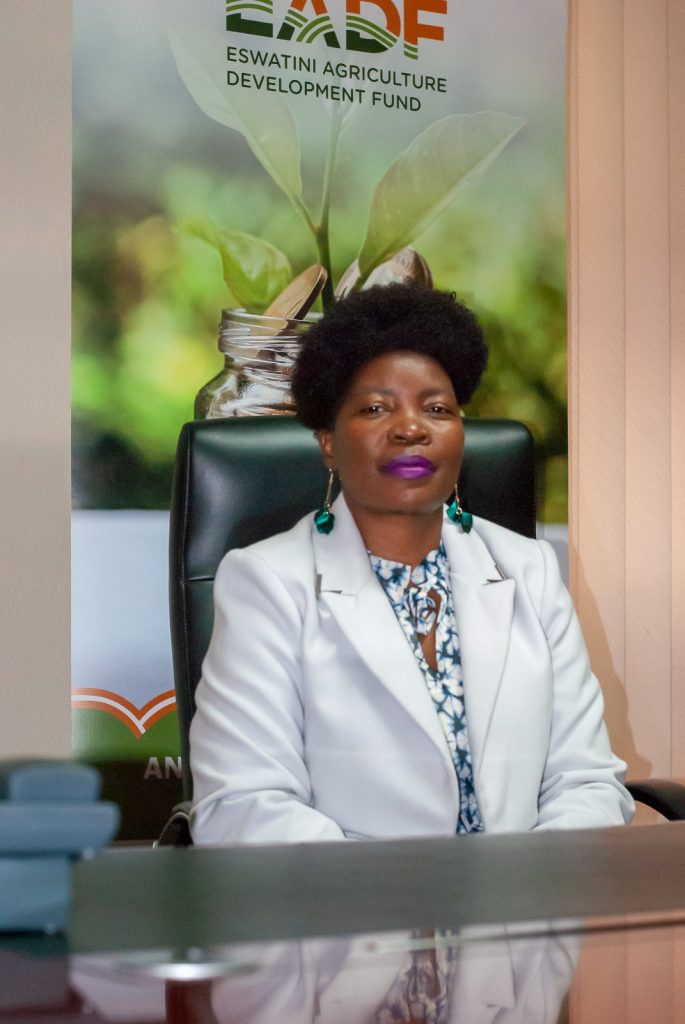
Q: The Eswatini Agriculture Development Fund (EADF) is a relatively new institution that many people may not be familiar with. Can you explain the mandate of the organization and how it operates within Eswatini’s agricultural sector?
A: Absolutely. The EADF was set up by the government of Eswatini through the Ministry of Agriculture to help breathe new life into the country’s agricultural sector.
Think of it as a special tool that brings financial muscle and technical support to the people who need it most—farmers, agribusinesses, and all value chain players.
Our core mission is to make farming more sustainable, competitive, and inclusive. We do that by offering smart financial solutions that not only support farmers but also encourage private sector involvement.
At the end of the day, we want to make agriculture a solid business opportunity, less risky and more rewarding for everyone involved. We support strategic investments in agricultural infrastructure, which then helps unlock further private investment.
We aim to create a safer and more attractive environment for investment in agriculture by helping to reduce the risks that usually scare investors away.
We work within the Eswatini National Agricultural Investment Plan (ENAIP), which serves as our guidebook. Our role is to unlock opportunities across the entire agricultural value chain—from farm to fork. We want an Eswatini where the entire value chain is formally organized and structured into a single umbrella.
Look at how the Eswatini Sugar Association (ESA) is structured; thus, one of the pillars of the ENAIP is formation of Commodity Industry Associations.
This improves horizontal and vertical coordination of agriculture and food industry actors. We want every player in the chain to be part of these associations and drive the agriculture sector to the greatest heights.
What sets us apart is how we tailor our approach. For instance, smallholder farmers are at the heart of what we do—they produce a great percentage of the country’s food, so it’s only right that we prioritize their needs.
Whether it’s improving access to credit, providing better inputs, or helping them adapt to climate change.
We also work closely with small to medium agribusinesses—those behind-the-scenes heroes who process, distribute, and add value to agricultural products. We help them access funding, develop their businesses, and tap into bigger markets, both locally and regionally.
We’re working to mobilize resources—both locally and from abroad—to strengthen agricultural value chains. Our goal is to become a fully independent and sustainable fund that is self-sufficient and use the demand-driven approach.

We aim to have a contingency fund to cushion farmers in times of crisis, like natural disasters or disease outbreaks. At the end of the day, our goal is to ensure food sovereignty, empower farmers, and grow Eswatini’s agricultural economy in a way that benefits everyone.
Q: What types of financial assistance does EADF provide to farmers and agribusinesses?
A: At EADF, we understand that different farmers have different needs, whether you’re just starting out or already established. That’s why we offer a range of financial support options tailored to fit your stage of growth.
For those just getting started, we provide seasonal loans ranging from E5,000 to E500,000 and medium-term loans from E10,000 up to E3 million. These are aimed at helping new farmers cover initial operational costs and make essential capital investments.
For existing agripreneurs looking to expand or modernize, we offer seasonal loans from E5,000 up to E1 million and medium-term loans ranging from E10,000 to E5 million.
These funds can be used primarily for investing in infrastructure such as irrigation systems, storage facilities, and equipment as well as production inputs like seeds and fertilizers.
Beyond loans, when the resource envelope allows we will also offer other tools to lighten the financial load, like risk-sharing facilities, input subsidies, matching grants, and interest rate subsidies.
It’s all designed to help farmers grow their operations, adopt modern practices, and access new markets more easily.
Q: Can you elaborate on how the EADF has helped improve access to finance for both smallholder farmers and commercial agricultural enterprises?
A: Access to affordable financing has long been a stumbling block for smallholder farmers. Traditional lenders often consider agriculture too risky, and many smallholders lack collateral or credit history.
At EADF, we’re closing this gap by making sure that smallholder farmers have access to funding in the agriculture space.Where smallholders have previously struggled to access funding, we’re now saying: “Come forward, let us help you.”
Whether it’s for on-farm infrastructure like irrigation or on farm infrastructure or equipments, or for working capital to keep operations running, our support is designed to be comprehensive.
We don’t just stop at infrastructure funding either. We understand that it’s pointless to build facilities if the farmer doesn’t have the working capital to use them. That’s why we make sure both elements are covered.
Plus, we provide technical support to ensure that the projects we fund are not only viable but also sustainable in the long run.


Q: What are the eligibility requirements for farmers to access EADF funding?
A: EADF is open to applicants as long as the applicant is above 18 and is an able bodies — we believe in potential, not age limits. One of our most successful beneficiaries is a 72-year-old bean farmer who’s thriving in commercial agriculture.
What truly matters to us is the strength of your agribusiness idea and your readiness to make it work.To be eligible, you must be a Swazi citizen, a company that’s 100% emaSwati-owned, and companies, schemes and cooperatives are also allowed.
Your business should be either already operating within—or planning to venture into—one of our priority value chains, which include key sectors like horticulture, livestock, and field crops/grains.
Your proposed investment should align with national sets targets s job creation, increasing exports or reducing imports, linking with smallholder farmers (like through aggregation), and contributing to technology or skills development in agriculture.
*To read the full article, download your free Issue on Pressreader (Inside Biz Issue 10)
